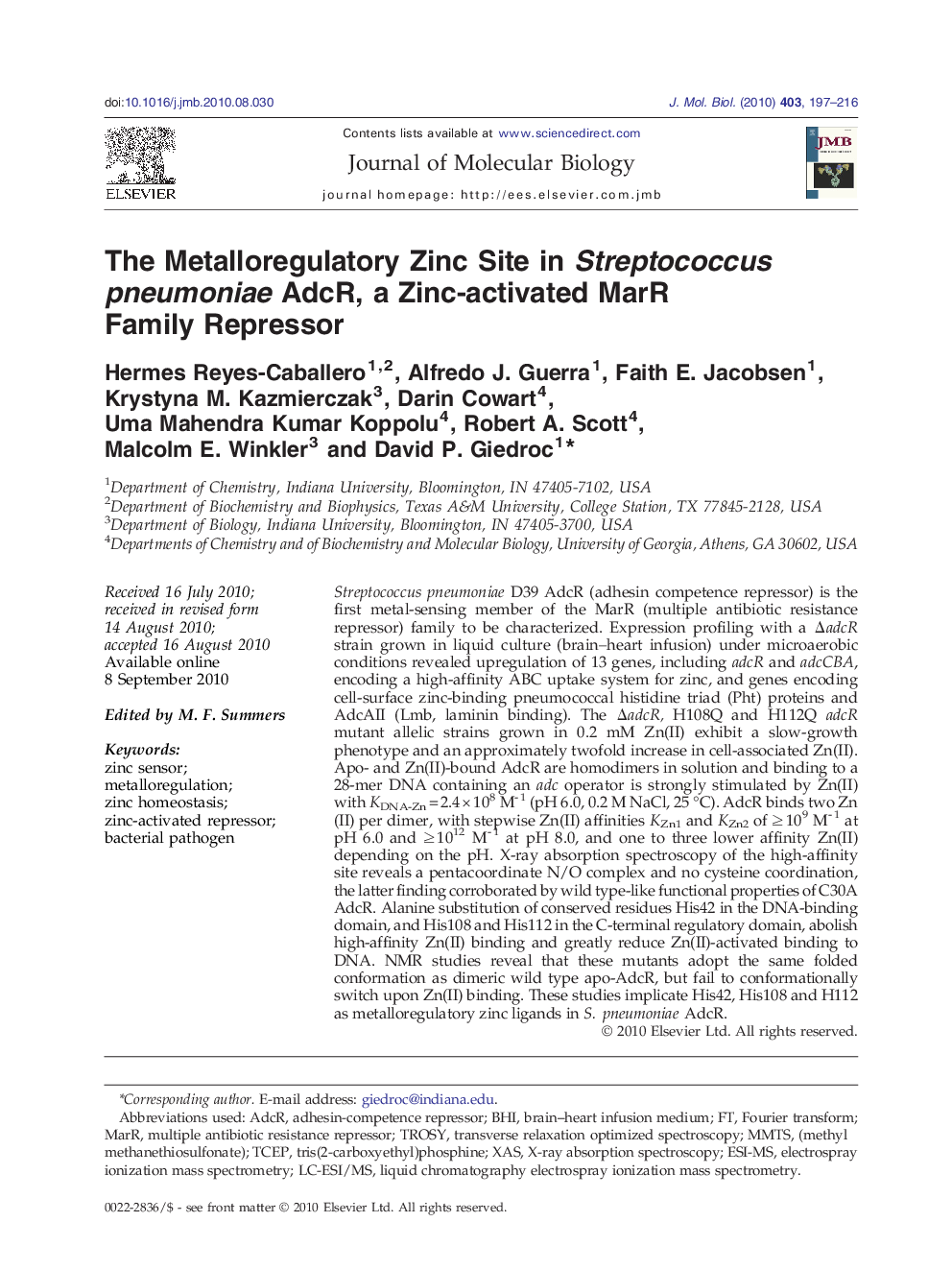| Article ID | Journal | Published Year | Pages | File Type |
|---|---|---|---|---|
| 2185748 | Journal of Molecular Biology | 2010 | 20 Pages |
Streptococcus pneumoniae D39 AdcR (adhesin competence repressor) is the first metal-sensing member of the MarR (multiple antibiotic resistance repressor) family to be characterized. Expression profiling with a ΔadcR strain grown in liquid culture (brain–heart infusion) under microaerobic conditions revealed upregulation of 13 genes, including adcR and adcCBA, encoding a high-affinity ABC uptake system for zinc, and genes encoding cell-surface zinc-binding pneumococcal histidine triad (Pht) proteins and AdcAII (Lmb, laminin binding). The ΔadcR, H108Q and H112Q adcR mutant allelic strains grown in 0.2 mM Zn(II) exhibit a slow-growth phenotype and an approximately twofold increase in cell-associated Zn(II). Apo- and Zn(II)-bound AdcR are homodimers in solution and binding to a 28-mer DNA containing an adc operator is strongly stimulated by Zn(II) with KDNA-Zn = 2.4 × 108 M- 1 (pH 6.0, 0.2 M NaCl, 25 °C). AdcR binds two Zn(II) per dimer, with stepwise Zn(II) affinities KZn1 and KZn2 of ≥ 109 M- 1 at pH 6.0 and ≥ 1012 M- 1 at pH 8.0, and one to three lower affinity Zn(II) depending on the pH. X-ray absorption spectroscopy of the high-affinity site reveals a pentacoordinate N/O complex and no cysteine coordination, the latter finding corroborated by wild type-like functional properties of C30A AdcR. Alanine substitution of conserved residues His42 in the DNA-binding domain, and His108 and His112 in the C-terminal regulatory domain, abolish high-affinity Zn(II) binding and greatly reduce Zn(II)-activated binding to DNA. NMR studies reveal that these mutants adopt the same folded conformation as dimeric wild type apo-AdcR, but fail to conformationally switch upon Zn(II) binding. These studies implicate His42, His108 and H112 as metalloregulatory zinc ligands in S. pneumoniae AdcR.
